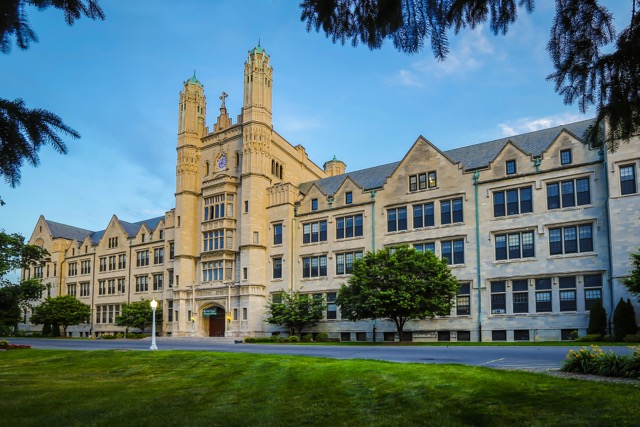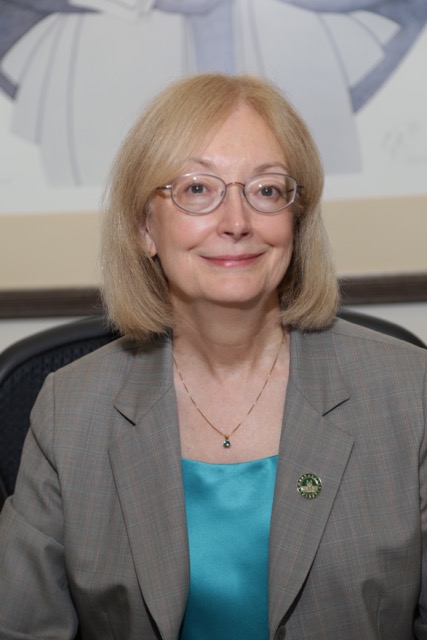Institutions of higher education an essential part of Live6 growth
Terryn Hall |
Tuesday, December 20, 2016
When Dr. Antoine Garibaldi came to the University of Detroit Mercy's campus over five years ago, he was on a mission: to figure out how to work with and engage people in the neighborhoods that make up the Live6 area.
He first had to figure out what community development and outreach had already been done. Some of that was accomplished with the support of the
Kresge & Ford Foundations, which funded the university to carry out the civic engagement component of Detroit Future City project. He also collaborated with leaders in the area to figure out what would be good not just for the university, but for the communities that surround it.
"As a result of some of those partnerships and collaborations, and hearing from the residents and also hearing from the business associations here along Livernois and McNichols," says Garibaldi, "we were able to say this is an opportunity for some business development initiatives and also an opportunity to address critical items like neighborhood stabilization, business attraction and retention, and public safety."
Those conversations resulted in coalitions like the Live6 Alliance, a planning organization for Northwest Detroit that's helped bring attention and investor money from anchor institutions to the area. Many other positive changes have also taken place, including the more street lights and an improved median adjacent to the campus.
The University of Detroit Mercy and Marygrove College, Catholic institutions positioned in the heart of northwest Detroit, have been neighborhood anchors since their foundings in 1877 and 1905, respectively. These schools have weathered the storms of economic decline after the fallout of the 1967 rebellion, the collapse of the auto industry, the hollowing out of the city's middle class, and Detroit's bankruptcy.
But with increased attention to development in the neighborhoods outside of the city center, they are key players in the future of the revitalization of the residential and business areas along 6 Mile and Livernois.
Working with the community for mutual benefit
 Campus of Marygrove College
Campus of Marygrove College
Sponsored by the Sisters of the Immaculate Heart of Mary Order, Marygrove College has a strong social justice mission. For president Dr. Beth Burns, this is realized through its programming.
The school offers an undergraduate program in social work and a graduate degree in social justice, as well as the Urban Leadership program, which was initiated with at grant from the Kellogg Foundation. "It's very important for us to involve students in academically rigorous projects that have a demonstrably beneficial impact on our community and its people," says Frank Rashid, co-founder of Marygrove's Institute for Detroit Studies.
Both Marygrove and Detroit Mercy have dedicated educational tracks that focus on community development. Father Tim Hipskind, director of Service Learning for the University of Detroit Mercy and the co-director of the Institute for Leadership and Service, finds student involvement in the surrounding community to be a core part of his students' development. "It's important to us to help students develop their natural capacity for compassion, justice, and service so that they can make a positive difference in their communities."
The Institute coordinated over 300 freshman students to help with clean up in the Fitzgerald neighborhood, as a precursor to the forthcoming development to take place directly across from the school's campus.
While both schools no doubt bring needed investment and attention to the area, as is evidenced by the University of Detroit Mercy's recent community impact assessment and Marygrove's numerous community-based programming, there are still residents who say more could be done.
In a recent community conversation held in conjunction with the Live6 Alliance and Model D Media, residents, students, faculty, and business owners in the neighborhood came together to talk about the future of the neighborhood. One of the main topics was whether the two institutions are currently doing enough community development, and what more they could do to connect to each other and residents in a more meaningful way.
Addressing challenges Dr. Beth Burns, president of Marygrove College
Dr. Beth Burns, president of Marygrove College
Tackling blight is important for both schools, as it impacts their ability to attract students. "The empty and boarded up storefronts frankly make it difficult to recruit students," Burns says.
While Marygrove offers the resources and warmth of a small liberal arts education, getting potential parents and students to imagine past the vacant homes that surround the school is a major challenge.
"You don't come to a university if you don't like the surroundings," says Garibaldi. "You don't go to a university if you don't think it's safe. You don't go to a university if you see lots of dilapidated homes and a lot of vacant homes. And we have all of that."
Other issues persist. While both colleges are surrounded by relatively stable neighborhoods, public safety continues to be a concern. Recent legislation allows security from private schools (both UDM and Marygrove are private institutions) to patrol and operate off campus, which is helpful but not a cure-all. Burns also cites traffic calming and road repair along 6 Mile as issues that need to be addressed.
There is also the reality that the commercial corridors along Livernois and McNichols lack businesses that draw people off campus. Couple that with the fact that many students are commuters (about
70 percent of Mercy's students live off campus), and you get less of a synergetic effect from students than hoped.
Thoughtful commercial development on McNichols remains elusive, but if done properly, could yield meaningful results, especially since the area is bracketed by two schools and surrounded by strong neighborhoods.
What lies ahead
The future of the Live6 neighborhoods is partially tied to how successful the institutions of higher education can be at driving equitable development. As large and highly visible institutions, they have the ability
to command attention, legislation, and dollars in a way that not only serves their students, but also the larger communities around their schools.
And though blight and other issues are still concerns, hope remains. As new development and opportunities come online in the next few years, it will be important for both the University of Detroit Mercy and Marygrove College to continue to tap into the strong networks around them. Growth in the Live6 area will no doubt positively benefit both schools, but the pace at which it occurs depends on how well the schools and their communities can work together to make it a reality.
This story is part of Model D's "On the Ground" series, which gives voice to the community members, businesses, and developers who make the Live6 neighborhood come alive. Support for this series is provided by the Kresge Foundation.